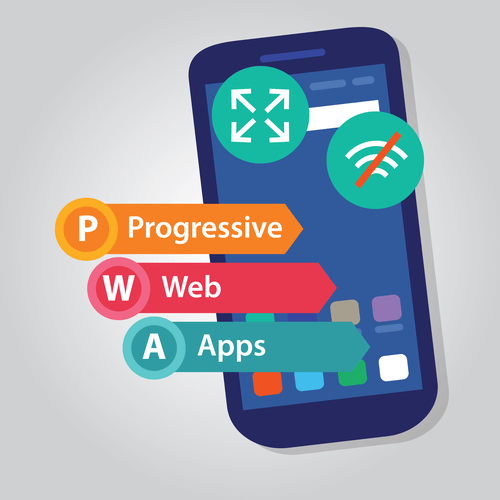MySQL has also made concessions to NoSQL practitioners with features such as a JSON data type, the “Document Store,” and support for sharding (horizontal scaling). SQL database schema always represent relational, tabular data, with rules about consistency and integrity. They contain tables with columns (attributes) and rows (records), and keys have constrained logical relationships. SQL plays a crucial role in data analysis and is widely used by data professionals for extracting insights from relational databases. It offers powerful querying capabilities, allowing analysts to write complex SQL queries to filter, aggregate, and join data.
For example, if you need a fast, scalable, and reliable database for web applications then a NoSQL system may be preferable. On the other hand, if your application requires complex data queries and transactional support then an SQL system may be the better choice. Ultimately, there is no one-size-fits-all solution – it all comes down to what you need from your database and which type of system can provide that in the most efficient manner. It’s best to research both options thoroughly before making a decision. This article compares SQL and NoSQL, exploring their key differences in terms of language, structure, scalability, properties and support.
When to use: SQL vs. NoSQL
In vertical scaling, data resides on a single node, and the only way to scale up is by adding more hardware resources, such as CPU and RAM, to one existing machine. An additional downside of vertical scaling is that it runs on one machine so if the server goes down, your application will go down too. It can be fun to learn something new, and SQL can introduce you to the world of data management. In the Introduction to Relational Database and SQL guided project, you’ll gain hands-on experience working with a relational database in just one hour. NoSQL databases offer horizontal scalability, meaning that more servers simply need to be added to increase their data load.
- Imagine a web form where most almost every element was a “required” field.
- Choosing the right database for your project depends on various factors, including the nature of your data, scalability requirements, and development flexibility.
- It’s also a wise decision when a business needs to expand in response to shifting customer demands.
- Each document can hold various types of data, including arrays, Booleans, numbers, strings, and nested documents.
- Similarly, each Delivery address row can relate to several Order rows.
- The services it supports are also not limited to the optimization or administration of the database.
As a result, other query languages specific to each NoSQL database type must be used. These one-off languages are usually less efficient and struggle with complex queries. As we have already mentioned, relational when to use NoSQL vs SQL databases can be scaled vertically, horizontal scaling is restricted because of the strict consistency requirements. Consistency enforcing mechanisms slow down the performance of the distributed database.
SQL Select
An eventually consistent approach tolerates inconsistent data across nodes for a period of time. However, as the name implies, data integrity is eventually enforced across all the nodes. Querying with NoSQL is less efficient than SQL because of the variety of data structures.

SQL also provides functions for statistical analysis, enabling users to perform calculations, summarize data, and generate reports. Data analysis jobs in India and worldwide often require proficiency in SQL due to its prevalence in the industry. Data and business analysts traditionally prefer relational databases because of their data analysis potential. NoSQL databases deliver few facilities for data analysis, and even the simplest queries require a certain level of programming expertise. More than that, the most popular BI tools do not work with NoSQL databases. Primary and foreign keys in relational databases prevent data redundancy.
Differences Between SQL & NoSQL That All Devs Should Know About
While both are viable options, there are key differences between the two that users must keep in mind when making a decision. SQL databases also support horizontal scaling, adding more database instances and distributing them across multiple machines or servers. When it comes to scalability, SQL databases are vertically scalable.

In many-to-many relationship, a single Order row can relate to several Delivery Address rows. Similarly, each Delivery address row can relate to several Order rows. NoSQL or “non-SQL” is a non-relational database that does not require a fixed schema and is easy to scale. NoSQL databases are scalable horizontally, meaning that they use multiple nodes in a cluster to handle increased workloads. This allows data architects to simply scale them by supplementing clusters with additional servers.
Related NoSQL resources
It works by allowing users to query, insert, delete, and update records in relational databases. SQL also allows for complex logic to be applied through the use of transactions and embedded procedures such https://www.globalcloudteam.com/ as stored functions or views. SQL allows users to perform CRUD (Create, Read, Update, and Delete) operations on relational database management systems (RDBMS) based on a structured and tabular format.

NoSQL is also better suited for applications with missing data sets that won’t impact business efficiency. You might use an SQL database for user-oriented applications with several join operations. SQL schema will help you establish ACID properties and improve data compatibility. These databases are also useful when quickly finding the data you need to complete a task. SQL databases are table-based, where each field in a data record has the same name as a table column. This proves beneficial when performing multiple data transformations.
SQL vs NoSQL Scaling
This means that NoSQL databases are better for modern cloud-based infrastructures, which offer distributed resources. In the event of selecting a modern database, the difficulty is to choose from the relational and non-relational database. Here, in this article, we are contemplating the differences between SQL and NoSQL. One of these databases is relational, and the other is non-relational. However, prior to understanding the NoSQL and SQL differences, users are advised to have a look at them individually.
Using NewSQL enables improved scalability with the strong transaction consistency of ACID, while still supporting data access using the familiar SQL. Another big difference between NoSQL and relational/SQL is that NoSQL systems do not require SQL for accessing data. NoSQL databases have been around for more than a decade, so NoSQL’s community is growing. This means developers may find it difficult to get some of their questions answered. For example, if a developer is experienced with wide-column databases, they may find it takes a lot of time to learn how to build graph databases. Because NoSQL data is spread over many regions and servers, there is no single point of failure.
Learn Latest Tutorials
Its gives you the flexibility to evolve your data schema without modifying the existing data. It is horizontally scalable i.e. you can reduce the workload by increasing the number of servers in your resource pool instead of relying on a stand alone resource. PostgreSQL supports B-tree, hash, GIN, GiST, and Sp-GiST index types. PostgreSQL’s community has been growing since its launch in 1996.